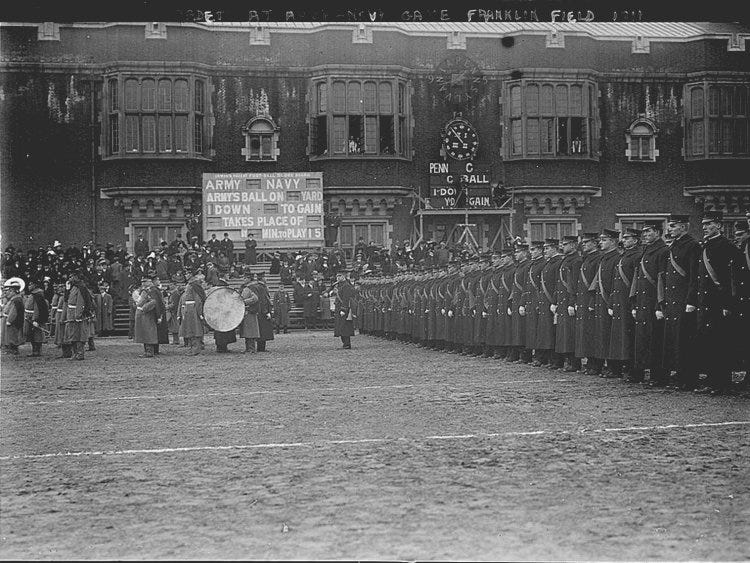Today's Tidbit... Baseball's Arthur Irwin and Football's First Scoreboards
This is one of those stories in which several distinct research threads merge into one involving football's first scoreboards, the wigwag system used at Harvard Stadium, and the game simulations performed before the arrival of radio broadcasts. The common element of these topics turned out to be Arthur Irwin, whom I was unaware had any involvement in these topics until now.
The earliest mention of a scoreboard used at a football game came at the 1892 Yale-Princeton game played at Manhattan Field. The news report indicates they posted the game score, likely using an existing baseball scoreboard rather than a purpose-built football scoreboard. The wait for an actual football scoreboard did not last long, arriving in 1893 with the Irwin Scoreboard at Penn's University Athletic Grounds.
Arthur Irwin, the scoreboard designer, was Penn's superintendent of physical culture or trainer while also nearing the end of a twelve-season major league playing career and was partway through seven years as a manager. Even then, he was best known as the first infielder other than a first baseman to wear a baseball glove, after which his Irwin Glove became quite popular.

Early on, Irwin transported his scoreboard from one location to another, and it appeared at the 1893 Harvard-Yale game in Springfield, Massachusetts.

The information seems rudimentary today, but Irwin was the first to create this system. He ensured its accuracy by having several operators work the scoreboard by walking up and down the sideline "wigwagging" or using his arms and body to relay information to the operators. Being on the field and signaling accurate information was critical in the days before player numbers, referee signals, and loudspeakers.

Irwin's scoreboards began popping up on other football fields, sometimes providing information on games of interest being played across towns or in other cities. His scoreboards also pioneered simulating away games by displaying information received via telegraph and telephone connections to remote stadiums.
Irwin enhanced the scoreboards over time, adding additional information, operators, and wigwaggers, and it was an Irwin Scoreboard that appeared at Harvard Stadium when it opened in 1903. That version included the usual information plus the numbers of the players who ran the ball, made the tackle, scored, or substituted into the game. The players themselves did not wear numbers, but each player had an assigned number in the scorecards whose sale generated additional revenue for the home team.
Making the connection that Harvard installed an Irwin Scoreboard in 1903 also helped identify Harvard's famous red-sweatered wigwagger, Eddie Morris. Eddie was a Southie and stockbroker hired by Irwin to lead the signaling from the field, who became something of a local celebrity. In addition to his in-stadium role, he sometimes acted as the announcer at Irwin Scoreboard simulations of Harvard away games.
Like many, Eddie made lots of money as the stock market rose in the 1920s and was a primary investor when the NFL's Pottsville Maroons became the Boston Bulldogs in 1929. Unfortunately, Eddie's fortune disappeared with the stock market crash, as did the Bulldogs after only one season. Even worse, Harvard converted to an electronic scoreboard in 1934 and no longer needed Eddie along the sidelines.
Arthur Irwin, on the other hand, died in 1921. Irwin was diagnosed with cancer and lost at sea while sailing from New York to Boston. Following his death, the world learned Irwin had trouble keeping score, as it became apparent he had one wife and family in New York and another in Boston.
Still, learning about Arthur Irwin led me to Eddie Morris, resulting in previously disconnected dots forming a sensible pattern. And now you know the score as well.
Football Archaeology is reader-supported. Click here to buy one of my books or otherwise support the site.






This one was really interesting, Tim! Always wondered about the origin of scoreboards. The “two families in two different cities” notation for Irwin was your subtle wit written at its best.